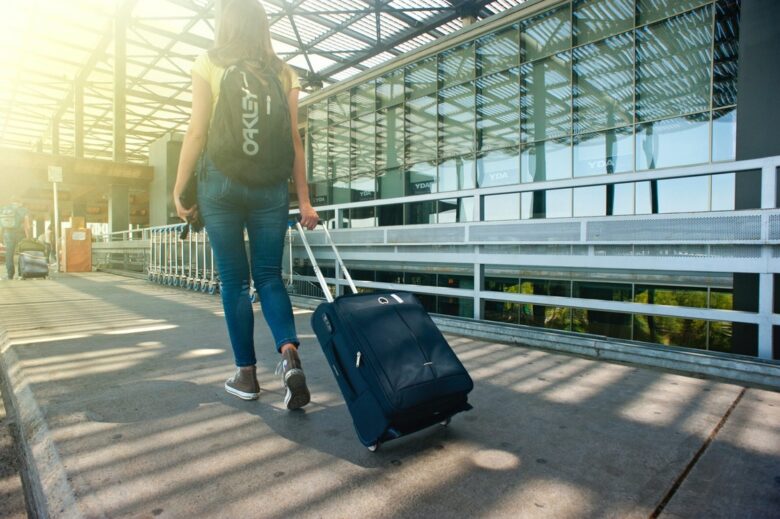Air travel, and security in particular, is exciting and nerve-wracking. With the Transportation Security Administration (TSA) changing standards, travel security information needs to be updated as well. Whether you’re a frequent traveler or a first-time traveler, knowing how to get through airport security can save you time and effort. From packing properly to knowing what’s allowed in your carry-on, these tips will make traveling easier and safer. Security measures protect everyone, and being prepared can make your trip smoother and your environment safer. While TSA regulations are complex, following simple, practical advice can go a long way. This comprehensive, fresh, and easy-to-use guide provides the 10 TSA travel security tips every passenger needs.
1. Know the 3-1-1 Rule for Liquids:
Knowing the 3-1-1 rule for liquids is an important rule for the TSA. Liquids must be placed in a clear, resealable, one-quart plastic bag and must not exceed 4 ounces. This includes gels, sprays, creams, and pastes. Many passengers are screened for carrying large shampoo bottles or multiple containers in different bags. This can delay cargo delivery and force you to throw away valuables. Following the 3-1-1 rule can help keep lines open longer and help TSA agents do their jobs faster. To comply with the rules and save space, purchase travel-size toiletries or refillable silicone containers. Place these in your carry-on bag for easy access during the security checkpoint.
2. Keep Electronic Devices Within Reach:
TSA checkpoints often require you to remove laptops and tablets from your backpack for screening. This rule allows TSA agents to inspect these items to make sure nothing suspicious is hidden. Keep electronic devices in your carry-on bag for easy access to speed up the security checkpoint. TSA PreCheck speeds up the security checkpoint by eliminating the need to remove your electronic devices and shoes. However, planning and packing ahead can save time at the regular security checkpoint. Instead of wrapping your electronic cords tightly around your body, use small bags or boxes to organize and display items. This will help you through the security check and protect your travel gear.
3. Dress for Security:
The TSA check can be affected by your clothing. Wearing shoes that are easy to put on and take off, without metal buckles, and with minimal jewelry can help prevent delays. Although TSA agents are efficient, people with extravagant clothing or accessories often require additional screening. Sandals or flip-flops are recommended over heavy boots. You may be asked to remove your coat and hood. Be careful with metal hair clips and underwire bras, which can set off metal detectors. A simple, streamlined look is the best way to avoid unnecessary stops and get through customs.
4. Be Prepared to Remove Outerwear:
Delays at TSA screening are sometimes caused by passengers forgetting to remove their coats, jackets, or heavy sweaters. These items must be placed separately in an overhead bin by the TSA before screening. To get through security more quickly in busy airports, it’s best to wear light, comfortable layers. Traveling in the winter? Keep your jacket in your carry-on until after security. This small change can help you avoid having to quickly search through too many items. Some travelers wear travel vests with multiple pockets for easy access to passports, wallets, and boarding passes—another airport efficiency tip.
5. Know What Not to Pack in Carry-On Bags:
A number of items are prohibited in carry-on luggage. These items include firearms, sharp objects, flammable objects, and tools. Even small tools like scissors, nail clippers with files, and small screwdrivers can be a cause for concern if they exceed the maximum dimensions. Check the TSA website or app before packing, especially for unusual items. If food looks suspicious on the scanner, it may be subject to further inspection. By staying informed and packing carefully, you can avoid delays and seizures.
6. Speed through Security with TSA PreCheck:
TSA PreCheck saves frequent travelers time. With PreCheck, you can bring shoes, computers, beverages, belts, and light outerwear. Lines are usually shorter and faster. It’s worth taking a background check and a short interview for convenience. Once your application is approved, you can add your KTN to your flight reservation. PreCheck can improve the airport experience for many travelers during peak travel seasons. Frequent travelers benefit from this upgrade.
7. Arrive Early, Especially During Peak Travel Times:
Travel time on the plane is crucial. The Transportation Security Administration (TSA) recommends arriving two hours early for domestic flights and three hours early for international flights. Allow extra buffer time during holidays, weekends, and peak travel periods. Stressful situations include lines, delays, and heightened security. Arriving early can help you avoid delays and deal with unexpected situations. You’re less likely to miss your flight. Use most airport apps or websites ahead of time to check current wait times.
8. Be Respectful and Obedient:
It may seem simple, but being friendly and cooperative with TSA agents can help. Security agents have a difficult job keeping everyone safe. Following instructions promptly, removing designated items, and communicating respectfully can help speed up the process. If the agent takes you for a second look, remain calm and obedient. Arguing or arguing will escalate the situation. Most security issues are minor and can be resolved quickly if travelers remain calm. Your attitude can have a major impact on the airport experience.
9. Secure Your Valuables Before Screening:
It’s easy to forget your valuables when they’re on the belt. Keep an eye on your wallet, phone, jewelry, and passport. Many travelers put these items in carry-on bags or zip pockets before security. Always put your valuables in your luggage. Also, keep an eye on your belongings when they go through the X-ray machine to make sure nothing is left behind. If possible, use a covered or locked suitcase at the airport for security.
10. Double-Check Your Travel Documents:
Finally, double-check your travel documents before you go to the airport. Make sure your ID or passport is valid and that your boarding pass matches. Many passengers experience delays because they forget to bring their ID or because they can’t use their e-boarding pass due to a weak signal. To be on the safe side, keep both an electronic and paper copy on hand. Keep your documents in a convenient location to avoid last-minute scrambling. An organized security process can reduce stress and increase control.
Conclusion:
Airport security doesn’t have to be a daunting experience. Follow these TSA travel security guidelines to save time, reduce stress, and streamline your check-in and check-out process. Understanding TSA procedures can make a chaotic airport trip go more smoothly. These helpful guidelines apply to all travelers, whether they’re flying domestically or internationally. Cooperating with TSA agents helps keep everyone safe. Keep these tips in mind before you pack your bags and head to the airport to make your trip go more smoothly.
FAQs:
1. What is the TSA 3-1-1 rule?
Each passenger is allowed a maximum of 4 ounces of beverage in a 1-liter resealable bag.
2. Do I need to bring my laptop through the TSA checkpoint?
Unless you have TSA PreCheck, you will need to remove your laptop from your luggage and place it in your carry-on for inspection.
3. Can I bring food through the TSA?
Solid snacks are allowed, but liquids or gels may be screened.
4. What should I wear to get through security quickly?
For ease of security, wear flip-flops, minimize jewelry, and avoid wearing belts or layers of clothing.
5. How early should I arrive at the airport?
At least 2 hours in advance for domestic flights and 3 hours in advance for international flights. During peak hours, you may arrive earlier.




